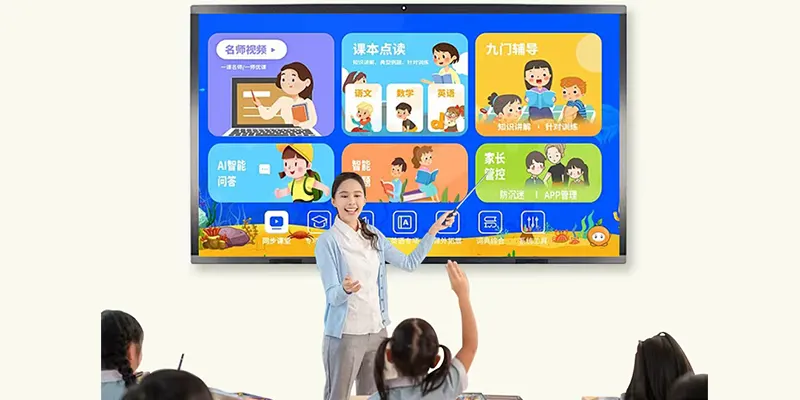Why Smart Classrooms Have Become an Inevitable Trend?1
Why Smart Classrooms Have Become an Inevitable Trend?
In the digital era, education is undergoing a profound transformation driven by rapid advancements in technology. Traditional teaching models—centered on textbooks, chalkboards, and face-to-face lectures—are gradually giving way to intelligent, data-driven, and interactive systems known as Smart Whiteboards. These modern learning environments integrate technologies such as artificial intelligence (AI), big data, cloud computing, and the Internet of Things (IoT) to enhance both teaching and learning experiences. The rise of Interactive Display is not just a passing fad but an inevitable trend in global education reform.
Technological Innovation Drives Educational Modernization
The most fundamental reason Smart Classrooms are becoming a trend lies in technological innovation. The widespread adoption of high-speed internet, AI algorithms, and Interactive Displays provides a strong foundation for educational digitization. In a smart classroom, teachers no longer rely solely on blackboards or PowerPoint slides; instead, they use Interactive Displays, Smart Whiteboards, and cloud-based teaching platforms to deliver content in more engaging ways. Students can interact through Interactive Displays, smartphones, or learning apps in real time. For example, they can submit answers instantly, participate in quizzes, or share ideas during lessons, which enhances student engagement and improves learning efficiency. This level of interactivity simply wasn’t possible in traditional classrooms.

2. Personalized Learning Becomes a Reality
One of the most remarkable advantages of Smart Whiteboards is personalized learning. In traditional education systems, a “one-size-fits-all” approach often fails to meet the diverse needs of students with different learning paces and abilities. Smart Whiteboards, however, use data analytics and AI algorithms to tailor educational content to each individual learner. The system collects and analyzes data such as learning progress, comprehension levels, and behavioral patterns to recommend customized exercises or review materials. For instance, weaker students may receive extra practice in specific areas, while advanced learners are provided with more challenging materials. This targeted approach ensures that every student learns effectively, realizing the true essence of “teaching according to aptitude.”
3. Enhanced Interactivity and Engagement
Smart Whiteboards transform the traditional teacher-centered model into a student-centered and interactive learning environment. Through real-time Interactive Displays, online collaboration platforms, and gamified learning systems, students can actively participate in discussions and group projects. Teachers, on the other hand, can use Smart Whiteboards to monitor student responses, provide instant feedback, and adjust their teaching strategies accordingly. For example, if the system detects that many students struggle with a particular topic, the teacher can immediately revisit and clarify that concept. This dynamic feedback loop makes teaching more responsive and learning more effective.

